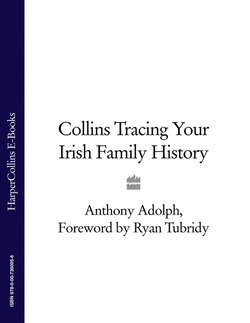Читать книгу Collins Tracing Your Irish Family History - Ryan Tubridy, Anthony Adolph - Страница 48
Catholic marriages
ОглавлениеEnglish Catholic baptisms seldom list addresses, or fathers’ occupations, but during the 19th century many marriage registers from areas influenced by Continental priests, especially in London, started listing parents’ residences, many of which were back in Ireland. Numerous Catholic marriages in Liverpool are indexed at http://freepages.genealogy.rootsweb.com/˜hibernia/mar/mar.htm. The late Fr. Godfrey Anstruther’s Catholic Marriage Index at the Institute of Heraldic and Genealogical Studies, Canterbury, has been fully transcribed by Peter Steward of the Parish Register Transcription Society. It covers mainly London and Essex, from the earliest date of the registers (c. 1700) to about 1880, with some entries up to 1942. It is full of Irish families, for example:
12 June 1859 at Commercial Road, London, by W. Kelly Phillip Noble of 42 Berner Street, son of Henry and Mary Noble of Scherwin, Germany, married Joanna McGonigle of 161 Georges Street, daughter of James and Mary McGonigle of Kilrush, Clare, Ireland, witnesses Joseph Noble and Margaret Hughes.
Registers are usually with the relevant church. All are catalogued by M. Gandy, Catholic Missions and Registers 1700–1880 (M. Gandy, 1993) in six volumes covering England, Wales and Scotland, and his Catholic Parishes in England, Wales & Scotland; an Atlas (M. Gandy, 1993). The major 19th century ones, such as those in Lancashire (where Catholicism had survived more comprehensively, and to which vast numbers of Irish immigrants came), have been published by the Catholic Record Society.
In 1853, municipal cemeteries were established and many Catholics chose to be buried there rather than, as hitherto, in Anglican graveyards. Catholic priests could perform their ceremonies there, recording details in their own burial (or, more correctly, death) registers. In addition, look out for confirmation registers, lists of prayers for anniversaries of deaths, and lists of parishioners, called status animarium (‘state of souls’).
